People face many challenges in their lives. The challenges may be individual, social or global. They may be practical, psychological or philosophical.
Whatever the challenge, however, there are virtually always solutions. Some solutions may work superbly. Some may cost money, some may cost very little.
Some may please everybody, whilst some may please fewer people. Some may simply be a case of doing the best you can in the circumstances.
Good decision makers recognise there are pluses and minuses to each potential option. Whatever their chosen way forwards, they build on the pluses and minimise the minuses. They then do whatever is necessary to achieve the picture of success.
During the past 45 years much of my work has focused on helping people to build on their strengths, build super teams and build superb organisations. At the same time, however, this has often involved people wanting to find solutions to challenges.
Different people have wanted to tackle different issues. These have included some of the following.
How to do more satisfying work?
How to regain my energy?
How to have a sense of purpose?
How to manage my bosses?
How to help our children to stay creative and get through school?
How to recover from setbacks?
How to respond to people enquiring about my illness?
How to deal with a conflict?
How to turnaround a team?
How to feel more at peace?
How to help people to build a successful prototype?
How to help our organisation to achieve ongoing success?
There are many models for helping people tackle challenges and achieve their picture of success. This article explores the creative problem solving approach. It explores how you can help people to focus on clarity, creativity and concrete results.
The following example looks at how you can help an individual to go through these steps. You can, however, apply the same approach when working with groups that want to find solutions. You discover more about how to do that by downloading The Creative Problem Solving Pack via the following link.
http://www.thepositiveapproach.global/positive-materials-free-stuff/
Imagine that somebody has asked for your help in tackling a particular challenge. They may want to change their career, take greater care of their health, turnaround a team, shift an organisation’s culture, tackle a technical challenge or whatever.
The first step will be to create a safe environment in which the person can feel calm and make considered decisions. Let’s assume that you have created such an environment. You can then help the person to work through the following steps.
Clarity
Clarity is crucial to creative problem solving. A person is more likely to succeed if they clarify the real results they want to achieve – the ‘What’ – before embarking on the ‘How’.
You can go through the following stages to help a person establish clarity.
Challenges
Invite the person to start by listing the various challenges they face. Then focus on the specific issue they want to tackle.
Invite the person to frame it in positive terms. For example: “How to stay healthy?” rather than “How to stop smoking?”
It can also be useful to write the challenge in terms of: “How to …?” For example: “How to do fulfilling work?” rather than: “I want to change my career.”
The “How to …?” phrase often encourages them to use their imagination to begin generating solutions.
If appropriate, you can also invite the person to give more background about the situation. This can help when focusing on their priorities.
Bearing this in mind, invite the person to complete the following sentence.
Clarity
Looking at the challenge the person wants to tackle, ask them:
“What are the real results you want to achieve?”
Sometimes this process takes a little time, but it is a vital step in creative problem solving.
Let’s explore one example of how this works in practice. Imagine your client is a leader. One of the key challenges they face is:
“How to motivate difficult people in the organisation?”
Looking beyond this issue, however, what are the real results they want to achieve? After some exploration, they may eventually conclude that the real ‘What’ is:
“How to build a successful organisation.”
The strategies for achieving this goal may be much more extensive – and effective – than those involved in tackling the first issue.
“But surely you have to turnaround difficult people in an organisation,” somebody may say.
Not necessarily. Great leaders communicate the story, strategy and road to success. They say:
“This is the future culture that is required if we are to achieve success.”
They then invite people: a) To decide if they would like to opt-into the future culture; b) To show how they want to contribute to achieving the picture of success.
People can choose whether they want to be part of making it happen. Great leaders keep focusing on the key strategies for enabling the organisation to achieve success.
Let’s consider another example. During one session a father asked how to help Tom, his son, to be better at passing school exams.
Both of Tom’s parents had been good at school and believed in paper qualifications.
Tom had other gifts, however, such as being a Trader. He did a paper-round, plus had a Saturday job in a music store.
So was the goal to help Tom to pass exams or to enable him to develop a fulfilling career? The father eventually decided to encourage Tom to build on his strengths and pursue his route as a Trader.
Let’s return to the specific challenge the person wants to explore. Invite them to do two things.
To clarify the real results they want to achieve. If appropriate, brainstorm all these goals.
To list these results in order of priority.
Invite them to complete the following sentences.
Controllables
Let’s assume the person is clear on the results they want to achieve. Before pitching into finding solutions, however, it is good to do a reality check.
Peak performers control the controllables. They build on what they can control and manage what they can’t control. The same rule applies to your client.
Imagine that they want to build a good relationship with their manager. They can control their own attitude and try to make clear working contracts. But they cannot control their manager’s behaviour or what the manager says about them.
Bearing this in mind, they can aim to act as a total professional. Things may or may not work out, but they will have done their best.
Returning to the results your client wants to achieve, invite them to describe the things they can control in the situation.
So far the person has clarified the challenge, the results to achieve and the controllables. It’s now time to move on to the possible creative solutions.
Creativity
Let’s return to one of the challenges mentioned earlier. Imagine your client is a leader who has been charged with turning around an organisation.
At first the issue seemed to be: “How to motivate difficult people in the organisation?” But they concluded that the real ‘What’ was:
“How to build a successful organisation.”
Let’s assume they are also crystal clear on what will be happening by a certain date. They have clear targets regarding the profits, products and people. For example, they may say:
“The profits will be … The product quality – including customer satisfaction ratings – will be … The people morale ratings will be …”
They will then move onto finding imaginative ways to achieve the goals. This often involves going through the process of exploring the choices, consequences and creative solutions. Let’s consider these stages.
Choices
Bearing in mind the goals they want to achieve, explore the possible options they can pursue.
If the client is a leader who wants to build a successful organisation, for example, they have a number of possibilities. These include:
a) To tweak the organisation a little and hope things improve. (Not the best option, but it is still an option.)
b) To take a command and control policy, focus on the detail and drive everybody towards the goals.
c) To concentrate on the profitable parts of the business and cut everything else.
d) To put everybody through a change programme geared to people changing their behaviour and delivering the goods.
e) To maintain some parts of the present business, but build prototypes that demonstrate how the business could be successful in the future.
Looking at the goal they want to achieve, invite the client to outline the possible options they can follow. Once these are out in the open, it will be time to go onto the next stage, considering the implications.
Consequences
Looking at each option in turn, they can consider the respective pluses and minuses.
Great decision makers, for example, often base their decisions on the consequences of each option, rather than the options themselves. They then build on the pluses and minimise the minuses.
Depending on the challenge they face, the client can outline the various options. They can then rate the attractiveness of each option on a scale 0 – 10.
Creative Solutions
Looking at the goals the client wants to achieve, are there any other possible creative solutions?
You can help them to do this by recapping what has been covered and perhaps asking some of the following questions.
“Let’s start by re-establishing your goals. What are the real results you want to achieve? How can you do your best to achieve these results?
“Let’s look at the different options you have outlined. Is it possible to take the best parts from each option and create a new road? If so, how would this look in practice?
“Looking at your goals, try to identify what might be the most successful strategies. Ask yourself:
‘What are the three key things I can do to give myself the greatest chance of success?’
“Let’s learn from your positive history. Looking back, have you ever been in a similar situation and managed it successfully? What did you do right then? Is it possible to follow any of these principles to achieve the goals?
“Let’s explore what you can learn from best practice. Are there any other people, teams or organisations that have managed this kind of challenge successfully? What did they do right then? How can you follow these principles in your own way?
“Sometimes we can get too close to events. Imagine for a moment that you are a consultant who is hired to give tough but fair advice. What advice would you give yourself to tackle the challenge and reach your goals?
“If you are tackling a conflict, keep asking: ‘How can we do our best to get a win-win?’ At first this may seem difficult, but focus on what people have in common. Most problems are solvable, but sometimes it takes a lot of creativity. Keep going until you find possible solutions.
“Let’s conclude by exploring any other options. Looking at the challenge: Is there anything else you can do? Are there any imaginative possibilities? Are there any other creative solutions?”
Invite the client to keep going until they feel they have explored all the possible options. They can then complete the following sentence.
Concrete Results
It is then time to translate the ideas in action. The person can do this by going through the following stages.
Conclusions
Looking at the various ways forward, they can settle on the route they want to follow. Sometimes they will choose to pursue one main option, sometimes to pursue multiple options.
What will be the pluses and minuses involved? How can they build on the pluses and minimise the minuses? Looking at the results they want to achieve, invite them to complete the following sentence.
Contracting
Looking at the road ahead, invite the person to consider if they need to make any contracts with people.
Their main contract, of course, is with themselves. Looking at the whole package – the pluses and minuses involved – do they want to make the inner commitment to achieving the goals?
If so, they may also need to make clear working contracts with other people who can help them to reach the goals. Invite them to complete the following sentence.
Concrete Results
There are many models for tackling challenges. Here we have focused on clarity, creativity and concrete results. You can adapt this approach in your own way, of course, to help the client to achieve their picture of success.
Bearing this in mind, you can invite them to complete the following step. The person can make a clear action plan and build in some early successes. This can help to create positive momentum on the route to achieving their goals.
“But why can’t we live without facing challenges?” somebody may ask. “There always seem to be difficulties. Do they ever go away?”
Paul Hawken, author of Growing a Business, has one answer. When running a business he studied many books by gurus. He believed that one day he would find business nirvana and the problems would disappear. But the truth hit him one sunny afternoon:
“I had my nirvana, all right, but it was the opposite of what I had been seeking. On that pretty afternoon the actual truth finally struck me: I would always have problems.
“In fact, problems signify that the business is in a rapid learning phase. The revelation was liberating. I couldn’t understand why other people hadn’t told me this earlier.”
People can apply the same approach to evolution. They will continually meet challenges, but they can tackle these and grow from the experiences.
There are virtually always solutions. We can tackle them by focusing on clarity, creativity and concrete results. We can then work towards achieving the picture of success.


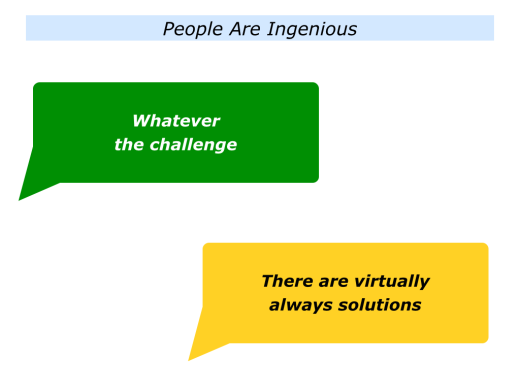
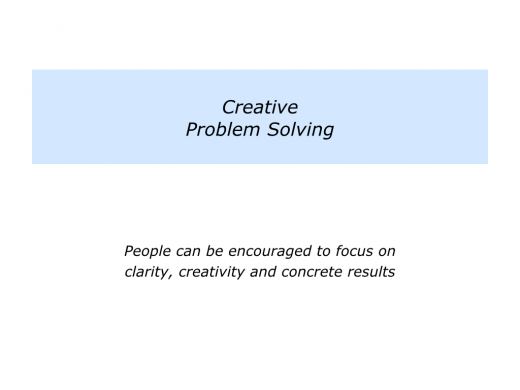
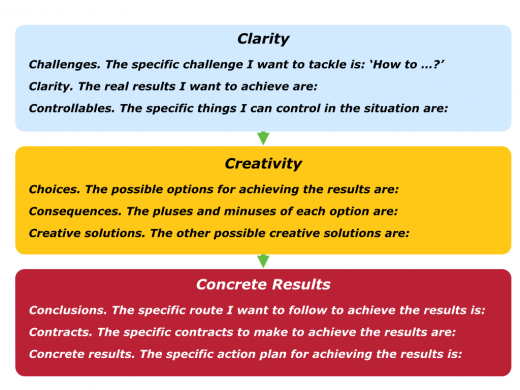
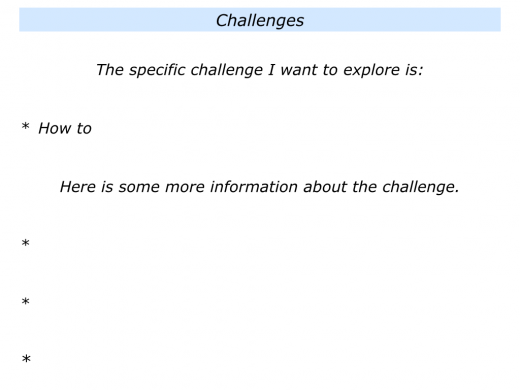
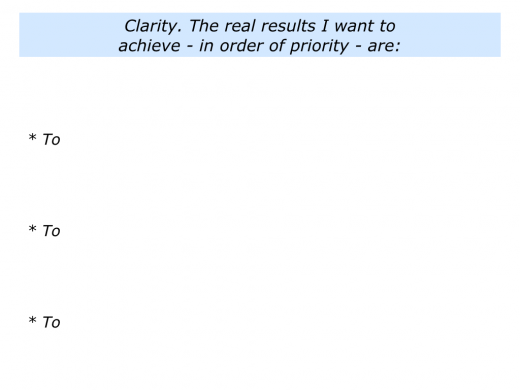
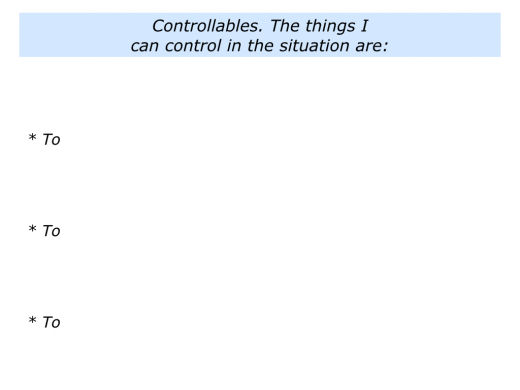
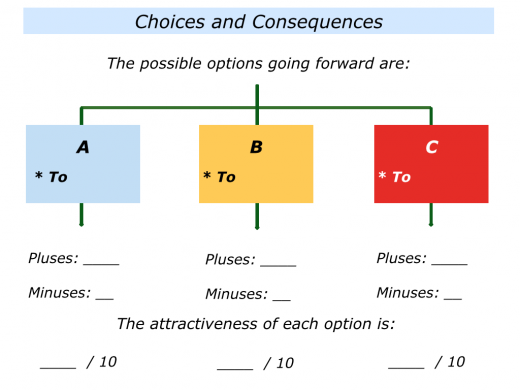
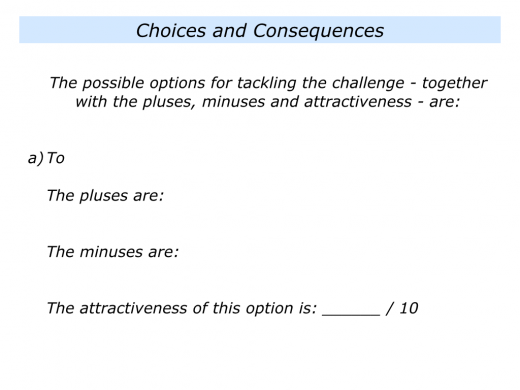
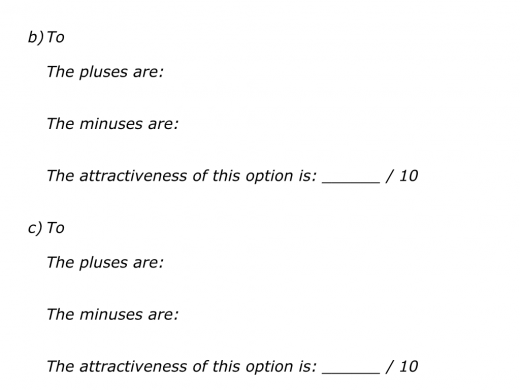
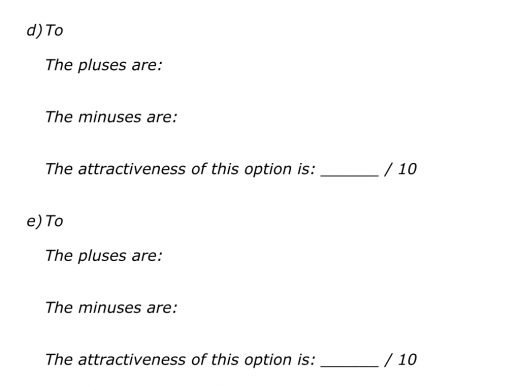
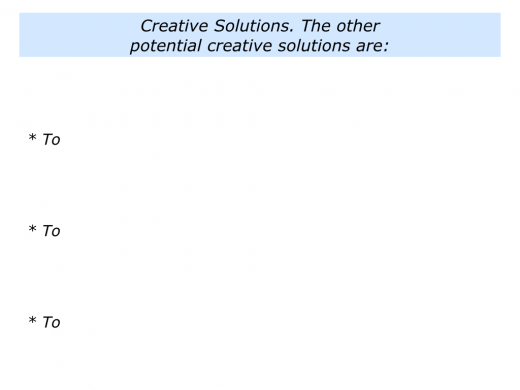
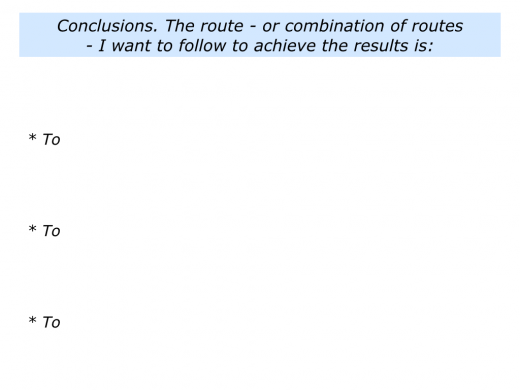
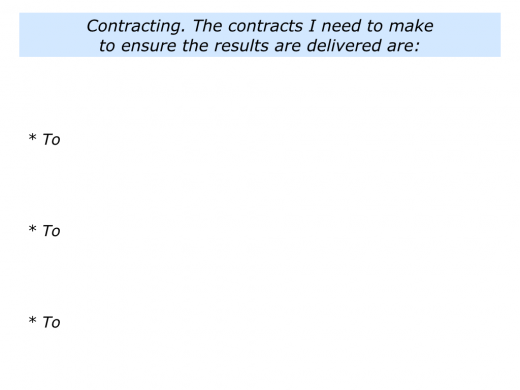
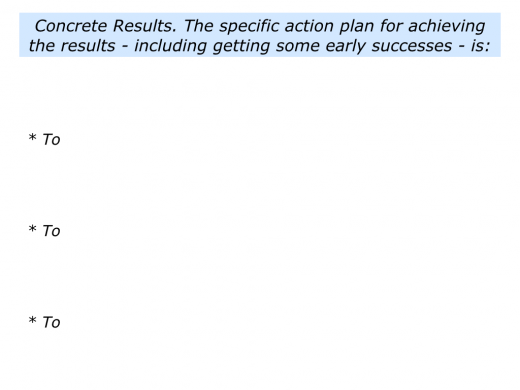
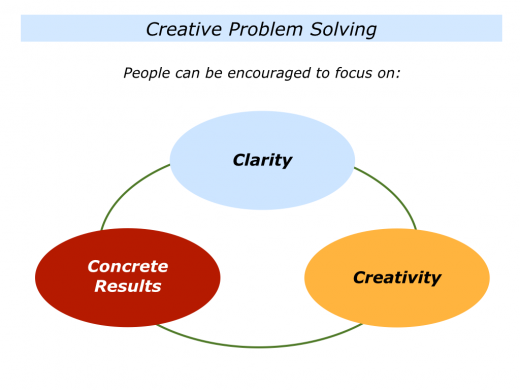




Leave a Reply